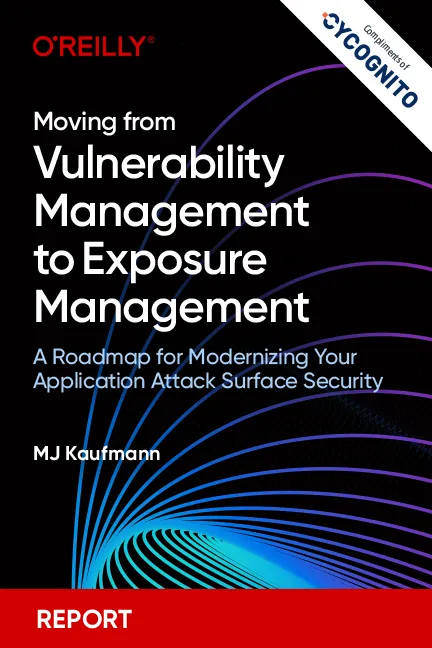Automated Penetration Testing vs PTaaS vs Manual Penetration Testing
Automated Penetration Testing leverages automated tools and scripts to quickly identify common vulnerabilities. It excels in speed, consistency, and the ability to scale across large environments. However, its effectiveness is limited to known vulnerabilities and predefined attack techniques, meaning it may miss more sophisticated or novel threats.
Penetration Testing as a Service (PTaaS) automates the process of hiring and working with human pentesters. Typically offered as a cloud-based solution, it provides continuous access to pentesing talent, who are often freelancers. PTaaS platforms allow organizations to schedule regular assessments and receive updates on new vulnerabilities, bridging the gap between fully automated tests and directly hiring pentester contractors or consulting firms.
Manual Penetration Testing: Manual testing relies on human expertise to simulate real-world attacks. Skilled testers can think like malicious actors, using creative, unconventional methods to exploit vulnerabilities. This makes manual penetration testing the most thorough option, as it can uncover sophisticated and context-specific vulnerabilities that automated tools might overlook. However, manual testing is time-consuming, resource-intensive, and more expensive. It is best suited for critical infrastructure, high-risk systems, or when in-depth security validation is necessary.
In summary, while APT provides speed and scalability, PTaaS offers a hybrid model with ongoing support, and manual penetration testing delivers the deepest analysis, albeit at a higher cost and longer time frame.

Tips from the Expert
Rob Gurzeev
CEO and Co-Founder
Rob Gurzeev, CEO and Co-Founder of CyCognito, has led the development of offensive security solutions for both the private sector and intelligence agencies.
In my experience, here are tips that can help you make better use of automated penetration testing:
- Use to enforce patch management discipline: Integrate automated testing results directly into patch management workflows. By doing this, you can create a continuous feedback loop where the tool identifies outdated software, and patch management tools act on it immediately, reducing the exposure window.
- Correlation of vulnerabilities with business impact: Customize your automated penetration testing tools to prioritize vulnerabilities based on their business impact, not just their technical severity. For example, a low-severity flaw in a payment processing system might have a far greater business impact than a high-severity flaw in a non-critical asset.
- Use custom exploit modules for in-house applications: Develop or customize exploit modules tailored to your internal applications. Many tools are designed for general systems and may miss vulnerabilities unique to custom software. A small investment in scripting custom test cases can provide significant security returns.
- Simulate advanced threat scenarios using integrations: Integrate your tool with a threat intelligence platform to simulate attack vectors from the latest advanced persistent threats. This can help you model real-world scenarios against your environment and catch novel exploits that a basic vulnerability scan might miss.
- Leverage cloud-based tools for distributed environments: If your infrastructure spans multiple cloud environments, use cloud-native automated penetration testing tools that scale with your environment. These tools can simulate attacks across cloud networks, APIs, containers, and serverless environments, which traditional pentesting often struggles with.
Key Features of Automated Penetration Testing Tools
Automated penetration testing tools come with a variety of features that enhance their effectiveness in identifying and mitigating security risks.
Automated Reconnaissance
Automated reconnaissance is one of the initial and critical steps in automated penetration testing. It involves gathering information about the target system, network, or application without direct interaction, similar to the way an attacker would begin their approach. Automated tools perform this task by scanning the network for open ports, running services, subdomains, and other potentially exploitable details.
These tools often use passive techniques, such as querying public databases, DNS servers, or analyzing metadata from web pages, to map the target environment. Advanced automated reconnaissance tools may also detect shadow IT assets or unmonitored devices, providing security teams with a complete overview of all possible entry points.
Vulnerability Detection
One of the core features of automated penetration testing tools is vulnerability detection. These tools are capable of scanning an entire IT environment to identify a wide range of security flaws, including those related to misconfigurations, outdated software, and weak passwords. They use extensive databases of known vulnerabilities and emerging threat patterns to ensure thorough detection.
Automated tools can identify vulnerabilities that may not be visible through standard scanning techniques. They often employ heuristic and behavioral analysis to detect unusual patterns that could indicate a security breach.
High Frequency Testing
High frequency testing refers to the ability of automated penetration testing tools to perform continuous or frequent security assessments without human intervention. This feature allows organizations to test their systems as often as needed, ensuring that new vulnerabilities, configuration changes, or software updates are quickly evaluated for security risks.
Because automated tools do not require manual input, they can run tests daily, weekly, or even in real-time. This continuous monitoring capability helps organizations maintain an up-to-date security posture, as vulnerabilities can emerge rapidly in today’s dynamic IT environments. Additionally, frequent testing enables quick identification and remediation of issues before attackers can exploit them, reducing the risk of prolonged exposure.
Customization and Scalability
Automated penetration testing tools offer customization, allowing security teams to tailor their scans to specific requirements. Configurable parameters enable targeting of particular networks, applications, or devices, ensuring that all critical assets are thoroughly tested.
Scalability is another significant advantage. These tools can be deployed across vast networks and handle numerous targets simultaneously, without a proportionate increase in resources.
Integration with Existing Security Tools
Automated penetration testing tools are designed to integrate with an organization's existing security stack. They can be connected with SIEM (security information and event management) systems, vulnerability management platforms, and other security tools to provide a holistic view of the organization's security posture. This integration facilitates better data correlation and more efficient remediation workflows.
The ability to integrate with existing tools also allows for continuous monitoring and real-time alerts. As vulnerabilities are detected, they can be automatically logged into ticketing systems for prompt attention by security teams.
Detailed Reporting and Analytics
Another key feature is the ability to generate detailed reports and analytics. Automated penetration testing tools provide comprehensive reports that outline identified vulnerabilities, their potential impacts, and recommended steps for remediation. These reports are often customizable, allowing security teams to focus on areas of highest concern or compliance relevance.
Analytics provided by these tools can help organizations understand trends in their security posture over time. By analyzing historical data, security teams can identify recurring vulnerabilities and underlying issues that need addressing.
Compliance and Regulatory Support
Compliance and regulatory support is a crucial feature of automated penetration testing tools. Many tools come with predefined testing methodologies and reporting formats that align with industry standards and regulatory requirements, such as PCI-DSS, HIPAA, and GDPR. This ensures that security assessments meet the necessary legal and regulatory obligations.
Automated tools can also streamline the compliance audit process by providing auditors with detailed and standardized reports. This reduces the time and effort required for preparing compliance documentation and helps organizations swiftly address any compliance-related vulnerabilities.
Common Challenges and Limitations of Automated Penetration Testing
While automated penetration testing offers significant benefits in terms of speed and scalability, it also comes with challenges and limitations that organizations must be aware of:
- False positives and false negatives: Automated tools may flag harmless activities as vulnerabilities (false positives) or miss subtle, complex issues (false negatives), leading to incomplete or inaccurate assessments.
- Limited contextual understanding: Automated tools may not fully understand the business logic or operational nuances of a system, causing them to overlook critical vulnerabilities tied to specific workflows or configurations.
- Inability to perform complex attack scenarios: Advanced attack scenarios, such as chaining vulnerabilities or exploiting zero-day flaws, require human intuition and adaptability, which automated tools lack.
- Compliance gaps: Automated tools may not fully address industry-specific regulatory requirements, potentially leading to gaps in compliance that manual testing or deeper context-specific reviews are better suited to handle.
Best Practices for Implementing Automated Penetration Testing
Implementing automated penetration testing effectively involves following certain best practices.
1. Give Access to All Teams Associated with Testing
To maximize the effectiveness of automated penetration testing, it's crucial to ensure that all relevant teams within the organization have access to the tools and test results. This includes not only the cybersecurity team but also IT operations, development, and compliance teams. Providing broad access facilitates better collaboration and ensures that vulnerabilities are addressed holistically.
Each team brings its own expertise: while the security team focuses on vulnerabilities and exploits, the IT team handles system configurations and patch management, and developers can fix application-level issues. This integrated approach ensures that vulnerabilities are quickly remediated by the appropriate stakeholders.
2. Throttle Automated Testing
Automated penetration testing tools can put significant stress on network resources and potentially disrupt normal operations, especially in production environments. To mitigate this, it’s important to throttle the testing, adjusting the tool's speed and resource consumption to minimize impact on system performance.
Throttling can be achieved by scheduling tests during off-peak hours or by configuring the tool to limit the number of requests per second. This practice ensures that automated tests are comprehensive without overwhelming the system, allowing organizations to maintain both security and operational stability.
3. Validate Automated Findings with Manual Review
Despite the capabilities of automated penetration testing tools, it is important to occasionally validate their findings with a manual review. Automated tools can produce false positives and may miss complex vulnerabilities. A manual review by skilled security professionals helps confirm the validity of the findings and uncover additional risks that automated tools may have overlooked.
This combined approach ensures a more accurate and thorough security assessment. Manual validation adds an extra layer of scrutiny, enabling organizations to confidently act on the results of their automated penetration tests and implement effective remediation measures.
4. Train Security Personnel on Tool Usage
Training security personnel on the usage of automated penetration testing tools is vital for maximizing their effectiveness. Comprehensive training ensures that the team understands how to configure, run, and interpret the results of automated tests. Skilled operators can fine-tune the tools to get the most relevant and accurate data, improving overall security assessments.
Additionally, well-trained personnel are better equipped to integrate these tools into the broader security strategy effectively. This includes collaborating with other teams, leveraging the data provided by the tools, and ensuring prompt remediation of identified vulnerabilities.
5. Integrate Testing into Security Policies
Integrating automated penetration testing into organizational security policies ensures that it becomes a consistent practice rather than an ad-hoc activity. Security policies should mandate regular automated testing to identify and address vulnerabilities promptly. This institutionalization helps in maintaining continuous vigilance and improving the overall security stance of the organization.
Moreover, integrating automated testing into security policies ensures that the results are systematically reviewed and acted upon. This leads to better alignment between testing results and remediation efforts, promoting a proactive approach to cybersecurity.
Automated Penetration Testing with CyCognito
CyCognito built its external attack surface management (EASM) and security testing platform to replicate an attacker’s thought processes and workflows.
CyCognito automates the first phase of offensive cyber operation with deep reconnaissance and active security testing. Pen testing and red teaming staff are able to immediately focus on meaningful activities that require human decision.
With CyCognito, your teams have access to:
- Continuously updated reconnaissance information – Dynamic updates to your full asset inventory across all business divisions and brands – seed information and manual updates are not required.
- Automatic black box penetration test results – Over 30,000 penetration testing modules applied to full inventory of exposed network infrastructure and web applications.
- Integrated threat intelligence and remediation planning services – Guidance on which assets to test first, with evidence.
- Workflows built for collaboration – Create subteams dedicated to specific pen testing and red team staff. Organizations and assets can be assigned per team based on predefined scopes. Instant access to what to test next.
With CyCognito your offensive security teams can pivot faster to human-led exploitation-based tests:
- Reduce time consuming and tedious reconnaissance work
- Reach your ideal security testing goals
- Reduce burnout and get better results
- Get more ROI out of bug bounty programs
Learn more about CyCognito for automated security testing.







 Complimentary Report
Complimentary Report